Beneficiary Designations: The Unsung Heroes (and Potential Pitfalls) of Your Estate Plan in California
Disclaimer: This blog post is for informational purposes only and does not constitute legal advice. You should consult with an attorney to discuss your specific situation.
Creating a comprehensive estate plan is crucial to ensuring your assets are distributed according to your wishes after you're gone. While wills and living trusts are fundamental components, many people overlook the significant role of beneficiary designations. These designations often take precedence over your will or trust, making them essential to understand and manage properly. In this post, we'll break down how beneficiary designations work in California, their relationship to your trust, and common mistakes to avoid.
What are Beneficiary Designations?
A beneficiary designation is a direct instruction you provide to a financial institution or other entity, specifying who should receive the assets held in a particular account upon your death. These designations are typically found on:
Retirement Accounts: 401(k)s, 403(b)s, IRAs (Traditional, Roth, SEP)
Life Insurance Policies: Term life, whole life, universal life
Annuities: Fixed, variable, indexed
Payable-on-Death (POD) Accounts: Bank (checking and savings) accounts and brokerage accounts
Transfer-on-Death (TOD) Accounts: Brokerage accounts
Why Beneficiary Designations Matter (They Usually Win!)
In California, beneficiary designations are generally considered non-probate assets. This means they bypass the probate process and are distributed directly to the named beneficiaries, regardless of what your will or trust says. This is a critical point: A well-drafted will or trust can be completely undermined by outdated or conflicting beneficiary designations.
Think of it this way: beneficiary designations are like specifically addressed letters. Your will and trust are like instructions for everything else that's not specifically addressed. The "addressed letters" (beneficiary designations) go directly to the addressee, even if your "general instructions" (will/trust) say something different.
How Living Trusts Can Work With Beneficiary Designations (and Where They Can't)
Retirement Accounts and Trusts: Naming your trust as the beneficiary of a retirement account can be complex and may have unintended tax consequences. Often, it's not the best strategy. Consult with an experienced estate planning attorney and a qualified tax advisor before making this decision. Potential issues include losing the ability for a surviving spouse to "roll over" the account, accelerating income tax liabilities, and potentially disqualifying the trust as a "designated beneficiary" for required minimum distribution purposes. A common approach is to name your spouse as the primary beneficiary and children as contingent beneficiaries.
Life Insurance and Trusts: Naming your trust as the beneficiary of a life insurance policy can provide several advantages, especially if you have minor children, beneficiaries with special needs, or a complex estate plan. The trust can manage the life insurance proceeds, ensuring they are used according to your wishes and protected from creditors or mismanagement.
POD/TOD Accounts and Trusts: While you can name your trust as the beneficiary of these accounts, it's often simpler to name individual beneficiaries directly. However, if you have concerns about a beneficiary's ability to manage funds or want to ensure the assets are used for a specific purpose, naming the trust might be beneficial. We also have to consider the possibility that someone you named may pre-decease you, potentially leading to probate of such accounts.
Common Mistakes to Avoid
Outdated Designations: This is the most common mistake. Failing to update your beneficiary designations after a life event like marriage, divorce, birth of a child, or death of a beneficiary can lead to unintended consequences.
Naming Minors Directly: Minors cannot directly inherit assets. If you name a minor as a beneficiary, a guardianship proceeding may be required to manage the funds until they reach adulthood, which can be costly and time-consuming. A trust can be a much better solution.
Failing to Name Contingent Beneficiaries: Always name contingent (secondary) beneficiaries in case your primary beneficiary predeceases you. Otherwise, the asset may end up being distributed according to your will (and potentially going through probate) even if you intended it to pass outside of probate.
Inconsistencies: Ensure your beneficiary designations align with your overall estate plan, including your will and trust. Discrepancies can create confusion, family conflict, and potentially lead to litigation.
Ignoring Tax Implications: Beneficiary designations can have significant tax implications. Consult with a tax advisor to understand the potential consequences and plan accordingly.
Reviewing Your Beneficiary Designations: A Checklist
Gather all relevant documents: Life insurance policies, retirement account statements, bank and brokerage account information.
Identify all beneficiary designations: Carefully review each document to see who you've named as beneficiaries.
Compare to your will and trust: Ensure your designations align with your overall estate plan.
Consider life events: Have you experienced any major life changes that warrant updating your designations?
Consult with an estate planning attorney: Get professional advice to ensure your beneficiary designations are properly structured and aligned with your goals.
Keep a record: Keep a copy of your beneficiary designations with your other estate planning documents.
Conclusion:
Beneficiary designations are a powerful tool in estate planning, but they require careful attention and ongoing maintenance. By understanding how they work in relation to your will and trust, you can ensure your assets are distributed according to your wishes and avoid potential pitfalls. Don't wait – review your beneficiary designations today!
Disclaimer: This blog post is for informational purposes only and does not constitute legal advice. You should consult with an attorney to discuss your specific situation.
